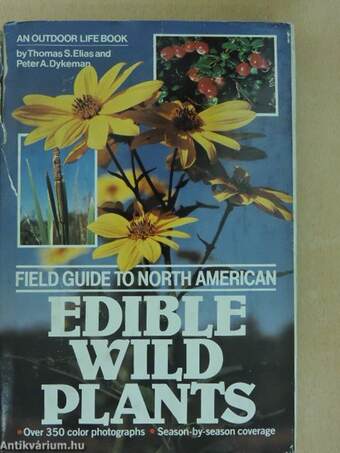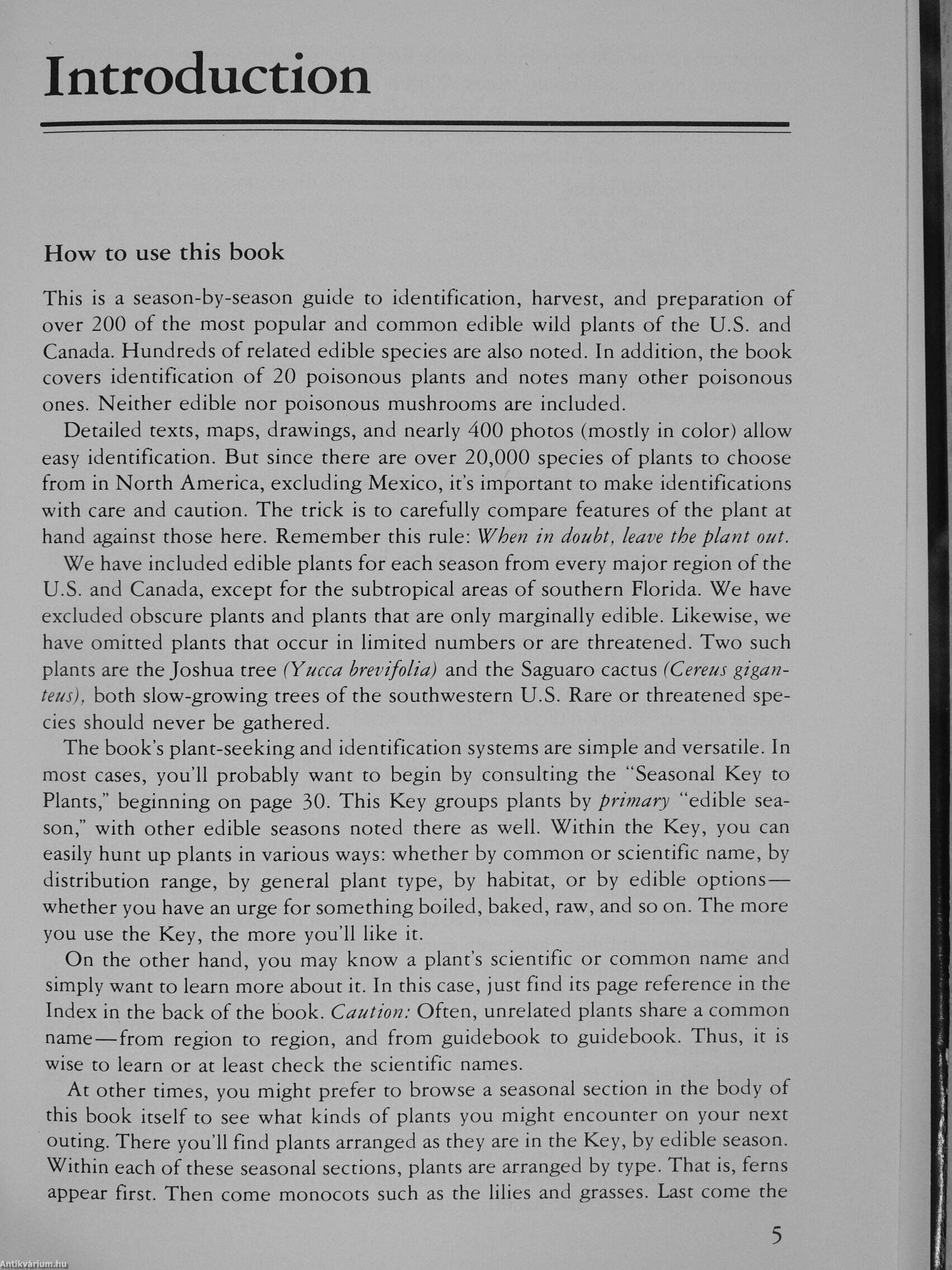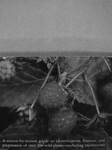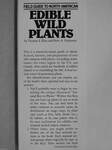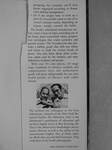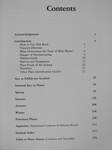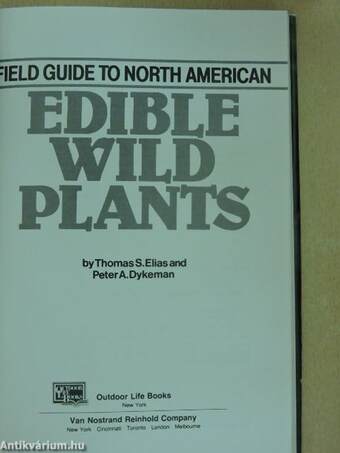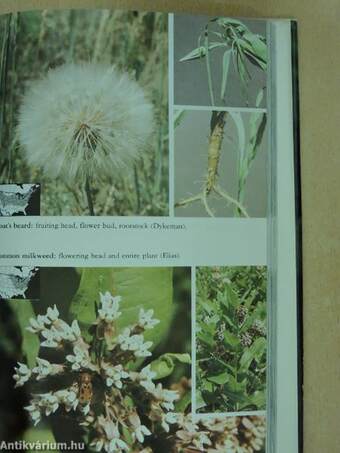1.063.104
kiadvánnyal nyújtjuk Magyarország legnagyobb antikvár könyv-kínálatát

VISSZA
A TETEJÉRE
JAVASLATOKÉszre-
vételek
Field Guide to North American Edible Wild Plants
| Kiadó: | Outdoor Life Books |
|---|---|
| Kiadás helye: | New York |
| Kiadás éve: | |
| Kötés típusa: | Fűzött keménykötés |
| Oldalszám: | 286 oldal |
| Sorozatcím: | Outdoor Life Books |
| Kötetszám: | |
| Nyelv: | Angol |
| Méret: | 22 cm x 15 cm |
| ISBN: | 0-442-22200-9 |
| Megjegyzés: | Színes és fekete-fehér fotókkal illusztrálva. |
naponta értesítjük a beérkező friss
kiadványokról
naponta értesítjük a beérkező friss
kiadványokról
Előszó
TovábbFülszöveg
A season-by-season guide to identification, harvest, and preparation of over 200 wild plants - excluding mushrooms
FIELD GUIDE TO NORTH AMERICAN
EDIBLE WILD
PLANTS
by Thomas S. Elias and Peter A. Dykeman
This is a season-by-season guide to identification, harvest, and preparation of over 200 common wild plants-excluding mushrooms-for every region in the U.S. and Canada. Also noted are hundreds of edibles related to or resembling the 200. A final section covers 20 poisonous plants.
For identifications, you can employ any of the book's three optional and easy-to-use systems:
1. You'll probably want to begin by consulting the unique illustrated "Seasonal Key to Plants." Within this Key, you can hunt up plants in one or more of five ways: You can find them by either common or scientific name, by distribution on range maps, by plant type (such as fern, herb, shrub, etc.), by habitat, or by your palate-that is, by your inclination for edibles raw, steamed, boiled, baked, whatever... Tovább
Fülszöveg
A season-by-season guide to identification, harvest, and preparation of over 200 wild plants - excluding mushrooms
FIELD GUIDE TO NORTH AMERICAN
EDIBLE WILD
PLANTS
by Thomas S. Elias and Peter A. Dykeman
This is a season-by-season guide to identification, harvest, and preparation of over 200 common wild plants-excluding mushrooms-for every region in the U.S. and Canada. Also noted are hundreds of edibles related to or resembling the 200. A final section covers 20 poisonous plants.
For identifications, you can employ any of the book's three optional and easy-to-use systems:
1. You'll probably want to begin by consulting the unique illustrated "Seasonal Key to Plants." Within this Key, you can hunt up plants in one or more of five ways: You can find them by either common or scientific name, by distribution on range maps, by plant type (such as fern, herb, shrub, etc.), by habitat, or by your palate-that is, by your inclination for edibles raw, steamed, boiled, baked, whatever
2. Other times, you might prefer to browse one of the four seasonal sections in the book. Each seasonal section groups plants logically by type, as in the Key. Then within the herb
(Continued on back flap)
grouping, for example, you'll find plants organized according to flower color and leaf arrangement. 3. Or if you simply want to look up a plant by its scientific name or one of its several common names, depending on region, simply consult the Index. The book's substantial introductory section covers a host of topics including use of the book, plant nutritional values, preparation techniques that retain nutrients, and general recipes. The Introduction also provides a habitat guide that tells you where and when to look for certain kinds of plants. You also learn about plant evolution, plant uses by the Indians, and taste differences in plants and people.
With over 350 color photos, 220 range maps, hundreds of reference symbols, and comprehensive texts, this authoritative guide will prove indispensable for any who would partake of Nature's wild edible bounty.
The authors are colleagues at the Gary Arboretum, a branch of the New York Botanical Garden. Dr Dykeman (left) is the arboretum's coordinator of education and has been highly active in Boy Scouting. Dr. Elias is the arboretum's dendrologist and assistant director, as well as the author of the monumental Complete Trees of North America. Both men are avid field botanists. They took most of the book's photographs.
Jacket color photos by Thomas Elias Vissza
Témakörök
- Idegennyelv > Idegennyelvű könyvek > Angol > Természettudományok > Földrajz
- Idegennyelv > Idegennyelvű könyvek > Angol > Természettudományok > Egyéb
- Idegennyelv > Idegennyelvű könyvek > Angol > Háztartástan > Diéta, életmód
- Háztartástan > Életmód > Táplálkozás > Egyéb
- Természettudomány > Növényvilág > Növénytan > Növényhatározó
- Természettudomány > Növényvilág > Növénytan > Növényföldrajz
- Természettudomány > Növényvilág > Kézikönyvek, határozók, lexikonok
- Természettudomány > Földrajz > Kontinensek földrajza > Téma szerint > Növényzet, állatvilág
- Természettudomány > Földrajz > Kontinensek földrajza > Topográfia szerint > Amerika
- Természettudomány > Földrajz > Idegen nyelv > Angol
Megvásárolható példányok
Nincs megvásárolható példány
A könyv összes megrendelhető példánya elfogyott. Ha kívánja, előjegyezheti a könyvet, és amint a könyv egy újabb példánya elérhető lesz, értesítjük.



